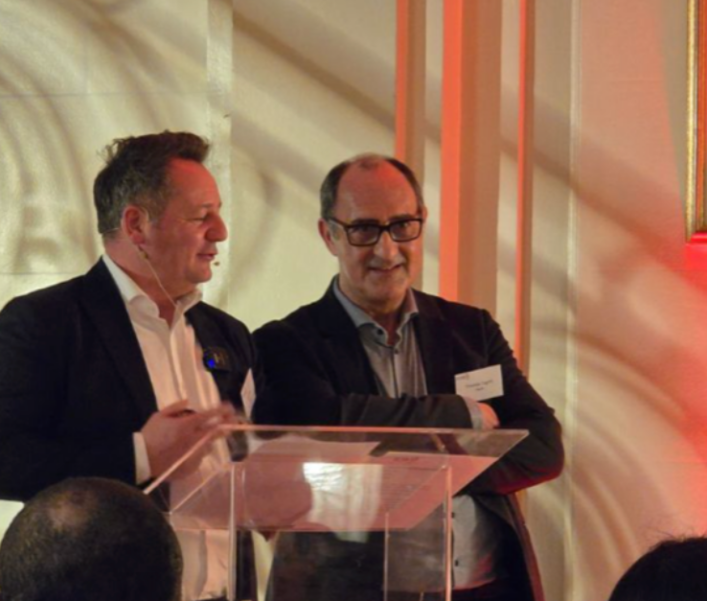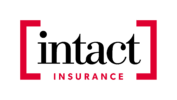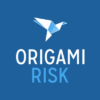Were you surprised to have won the award?
Thomas Tagnit: Certainly, because I am an atypical risk manager. On the one hand, I have only been active in insurance and risk management for 15 years. And on the other hand, I spend only 15-20% of my time in risk management and am the only one working on it at Lhoist. It is quite an honour to be recognised by my peers, the insurance world and risk managers in Belgium for my professional qualities and my will to get things done. I am very proud of that. I found out afterwards that a broker nominated me for my contribution and involvement in a particular project at Lhoist.
Can you tell a bit more about this project?
Thomas Tagnit: Our CalCC project in Réty aims to decarbonise France’s largest lime plant. It is part of the ‘Cap Decarbonation’ partnership approach that involves five contracting authorities and covers 3 projects in France. CalCC aims to capture and permanently store the irreducible CO₂ emitted during lime production at the site. CalCC project represents a significant undertaking with the goal of reducing emissions and capturing around 1.5 million tons of CO₂ on an annual basis (including the emission of Eqiom, the cement company partnering with Lhoist in that project). This innovative project covers the entire CO₂ value chain: capture, transport, liquefaction, shipping, and offshore geological storage, and I looked at which parts of this could be insurable. To do this, I approached a whole host of insurers in addition to insurance brokers, and wanted to know what they thought about this new type of risk that will come to market.
And what are your observations after your round of studies?
Thomas Tagnit: I quickly realized that this topic was very new to them, and no one really had a magic solution in mind. All are talking about climate change, but we are a “hard to abate” sector (two-third of our CO 2 emission are resulting from the chemical conversion of limestone into lime and are therefore irreducible). Therefore, I asked them what they can do. What solutions can you put forward to tackle this issue. Finally, we are talking about capturing and storing 1.5 million tons of CO₂, representing a potential investment of over € 800 million. I worked hard on this project and really did push insurers and brokers to help think of solutions. I will continue to do so because it represents an important challenge for Lhoist and, ultimately, I want to be able to give a clear answer to my organisation.
You spend only 15% to 20% of your time on risk management for a large industry group. Is this sufficient?
Thomas Tagnit: No, it is not sufficient, but it depends on what you want to achieve with this function and how you involve the broker. I personally believe that we need to do more because new risks might arise, and we need to continuously review the triangle coverage/retention/premium. My ambition for the coming years is clear: further develop risk management within Lhoist in the context of the existing (and new) risks, as well as our decarbonization ambitions. And when I eventually retire, in less than 10 years, I want to leave behind something solid and built up.
Professionally, you first encountered insurance about 15 years ago. What are your impressions about insurance?
Thomas Tagnit: It was a discovery. Apart from my private insurance, I knew only little about it. It is often said that insurance is a necessary evil and a tedious matter. For me, it is not: insurance is the last step in managing risk. I do believe that risk analysis and insurance are one unique thing. Insurance comes last, as a safety net that provides cover after taking all possible preventive measures. I find that, if we play our role as risk managers well, we can really get to the heart of the operations. We are partners in the business and we need to understand how to mitigate the risks. For example, I liaise with my colleagues in charge of underground mining to better understand the operational risks associated with this activity. Ultimately, I am the link between the insurance world and the operational colleagues, and I find it a very interesting work.
How did you learn about BELRIM? What do you find interesting about it?
Thomas Tagnit: I got to know the organisation when I was invited by Marsh to a FERMA conference in Stockholm, Sweden, in 2011. I did not know FERMA and learned there that it was the European association of risk managers. When I was also told that there was a Belgian branch, my interest was immediately piqued. Of course, the fact that I knew Gaëtan Lefèvre, the former president, also helped. On the one hand, I find it interesting that I can talk to colleagues about all kinds of issues that concern me in my job, e.g., what do you think about this broker or insurer? How would you approach this issue? It allows you to benchmark, discuss, and connect. On the other hand, BELRIM gives me the opportunity to build a network of specialists.
Is a network important in your work?
Thomas Tagnit: Yes. It allows me to discuss and review certain issues independently of brokers and insurers. It also allows me from time to time to directly connect with certain insurers, although I certainly don’t want to bypass the broker, because I think the broker is necessary; it is their job to know the insurance world well. So, every year, I have my stewardship in Zurich without the broker, where we discuss what they all do, and I do the same at Chubb. And through events, I can still expand my network. Still, I don’t come to all BELRIM events, because I unfortunately cannot free-up so much time. Moreover, I am also a member of ATEB, Association of Corporate Treasurers in Belgium, and its Luxembourg branch.
Have you had many reactions to winning the Award?
Thomas Tagnit: I was clearly impressed by the number of positive reactions. For example, more than 100 people responded via LinkedIn, of course some colleagues at Lhoist, but also from outside. Following the award, I have been contacted by insurers and peers to further discuss on the decarbonization and ESG topics. This gives me obviously much more visibility.
How do you see the evolution of the insurance sector and risk management?
Thomas Tagnit: The insurance sector will have to adapt. They cannot take all the risks, that is clear, but they will have to adapt to accompany certain sectors and better understand new technologies related to the carbon capture, utilisation and storage (CCUS) ones to ultimately help make the economy more sustainable. However, some insurers are pulling back, as we have seen recently in California. So, a new balance needs to be found.









